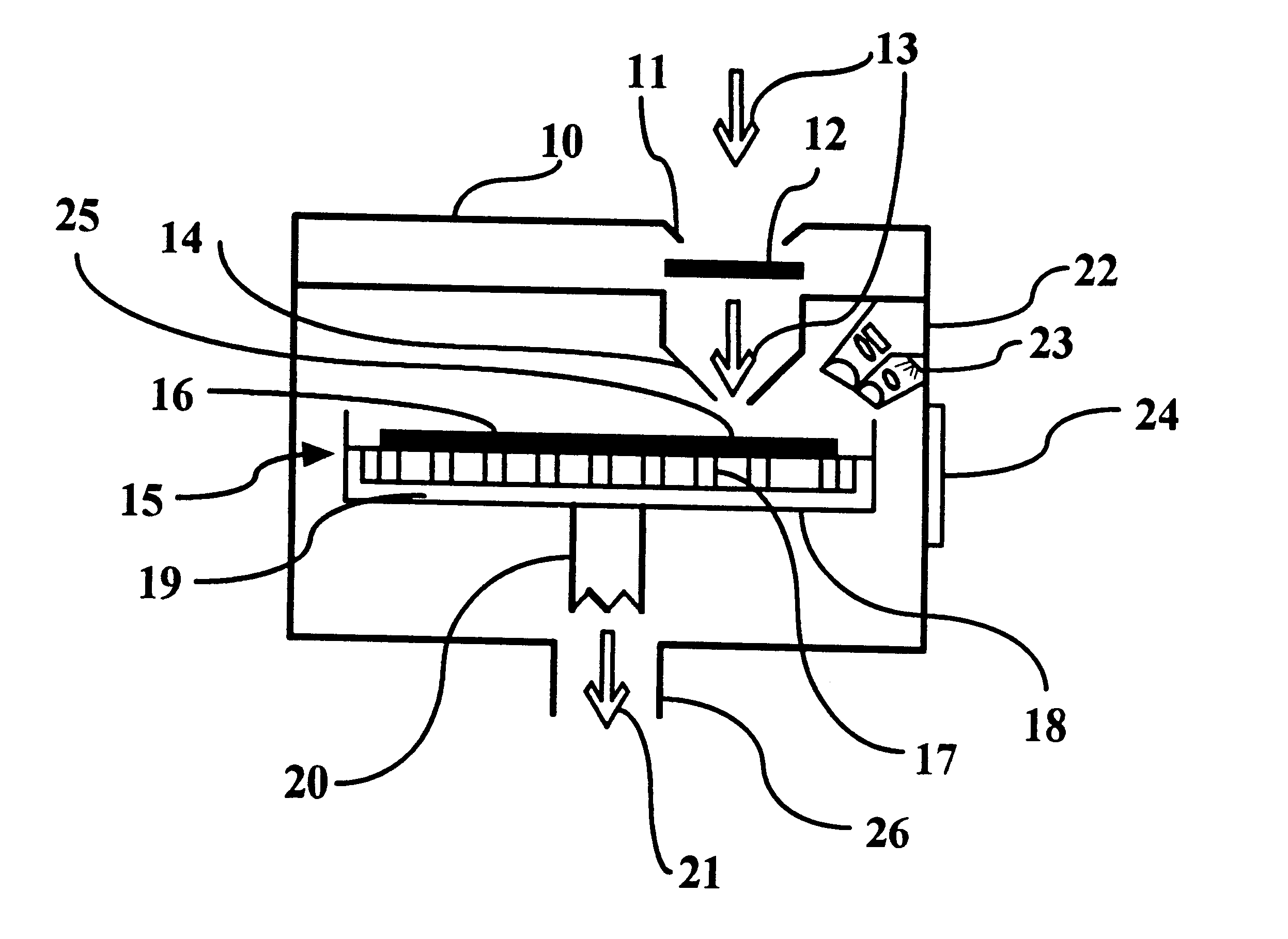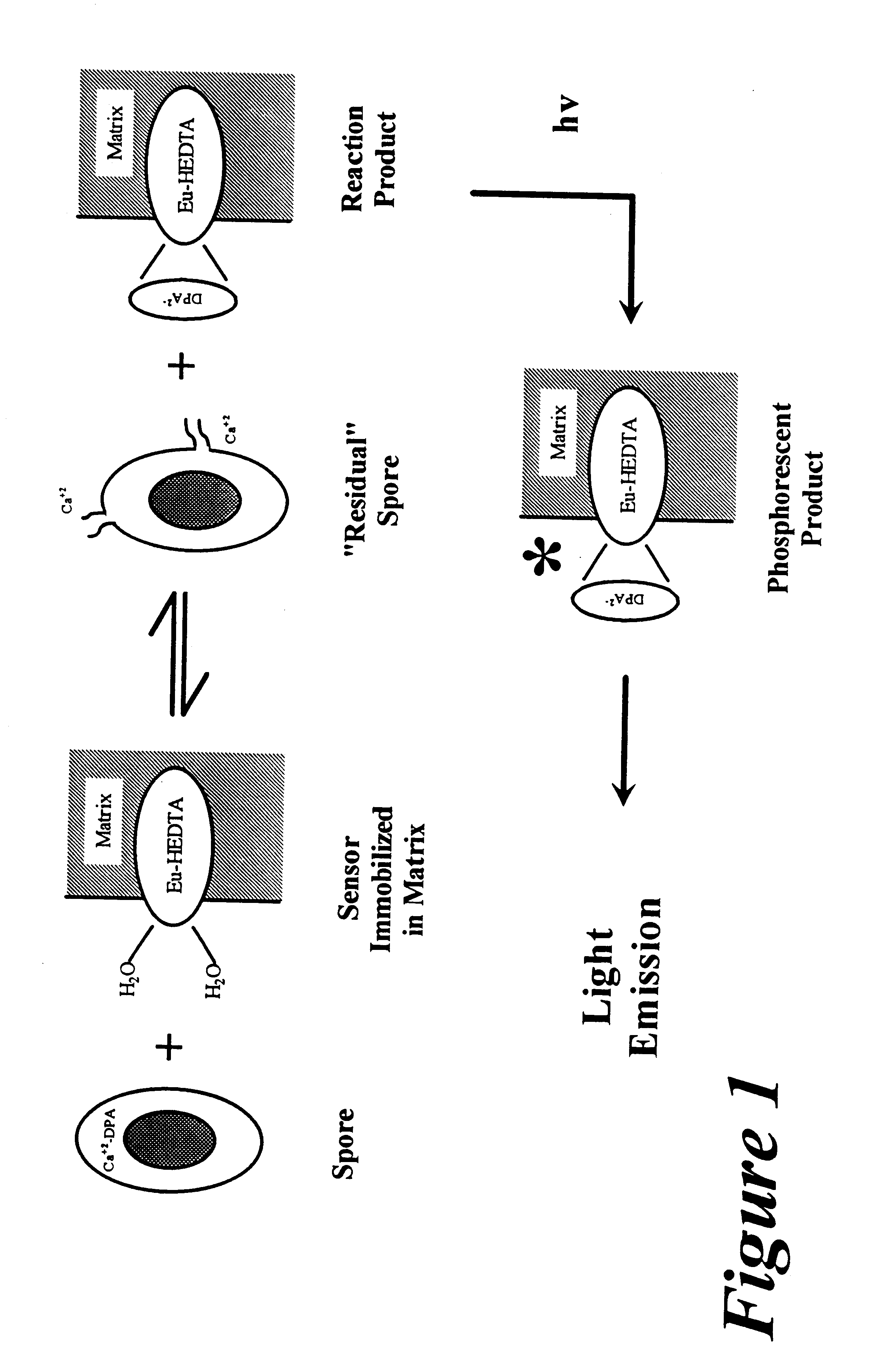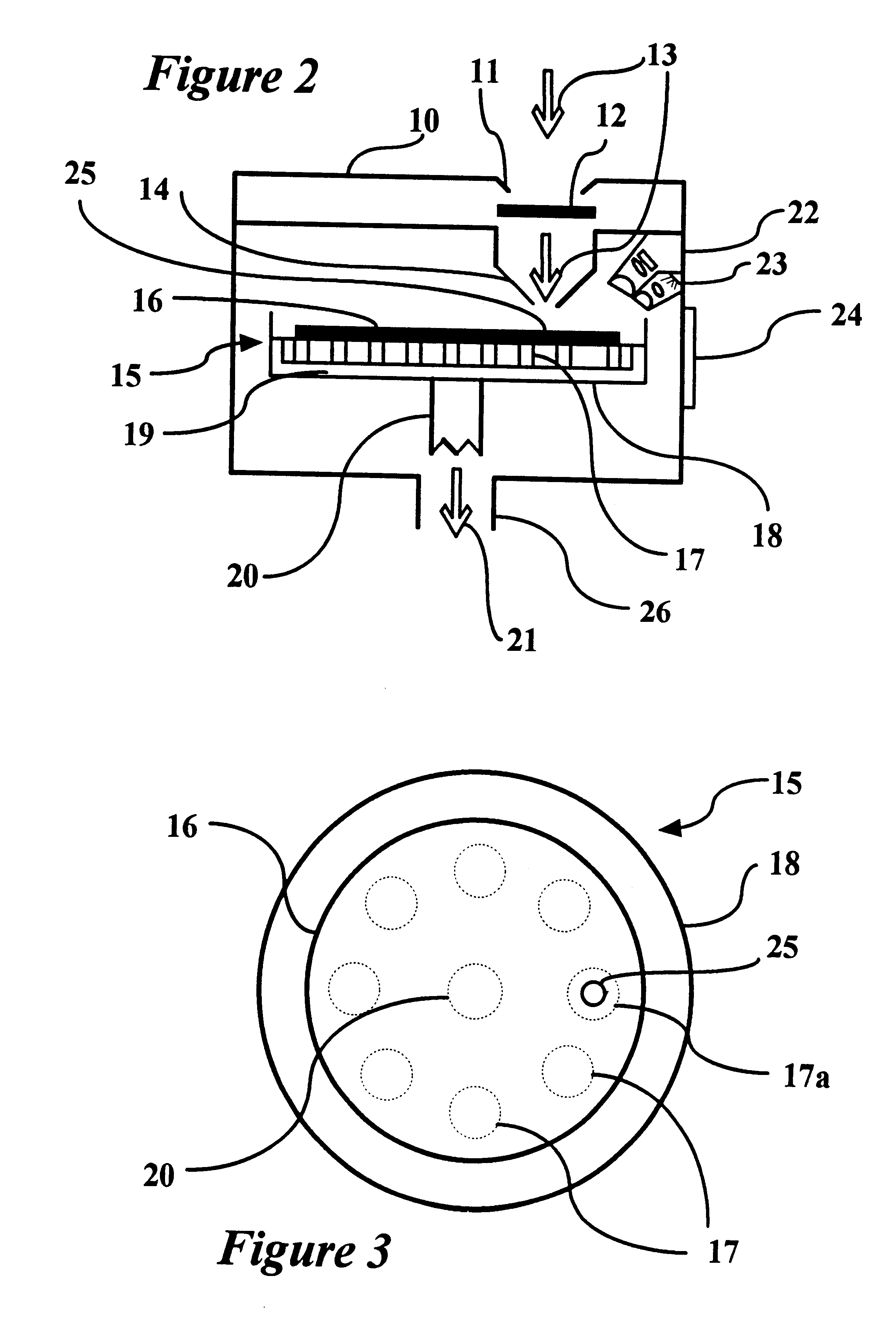Detection of biological warfare agents
- Summary
- Abstract
- Description
- Claims
- Application Information
AI Technical Summary
Benefits of technology
Problems solved by technology
Method used
Image
Examples
Embodiment Construction
The present invention provide methods and devices for the detection of biological warfare agents, especially Bacillus anthracis and Clostridium botulinum, using spore-specific phosphorescence. More specifically, the present invention provide methods and devices for the detection of spores of Bacillus anthracis and Clostridium botulinum using spore-specific. phosphorescence. The present methods and devices are based on the reaction of specific spore-derived small target molecules with sensor compounds to produce a reaction products having unique phosphorescence characteristics. The general reaction scheme can be illustrated by the following equations:
Sensor+Target-Spore⇄Reaction Product+Residual Spore
and
Reaction Product+hv1→Phosphorescent Product→Light Emission (hv2)
where the exciting frequence v1, is typically in the range of about 270 to 280 nm and emission frequency is typically in the range of about 500 to 650 nm. The phosphorescent reaction product, if formed, indicates the pre...
PUM
| Property | Measurement | Unit |
|---|---|---|
| Biological properties | aaaaa | aaaaa |
| Sensitivity | aaaaa | aaaaa |
| Selectivity | aaaaa | aaaaa |
Abstract
Description
Claims
Application Information
 Login to View More
Login to View More - R&D
- Intellectual Property
- Life Sciences
- Materials
- Tech Scout
- Unparalleled Data Quality
- Higher Quality Content
- 60% Fewer Hallucinations
Browse by: Latest US Patents, China's latest patents, Technical Efficacy Thesaurus, Application Domain, Technology Topic, Popular Technical Reports.
© 2025 PatSnap. All rights reserved.Legal|Privacy policy|Modern Slavery Act Transparency Statement|Sitemap|About US| Contact US: help@patsnap.com



